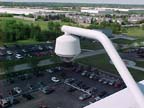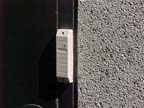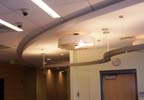

Centegra Health System
When Centegra Health System, McHenry County, Ill., made the decision recently to integrate its video surveillance system with access control and alarm monitoring, it had one primary goal.“They wanted more timely review of video and immediate access to video in the event of an emergency,†explains Steve Bakes, system design and sales engineer for Initial Electronics, Alsip, Ill., which recently completed Centegra's video system upgrade.
“Even with the advent of digital video recording, you still would typically need to search through events and look for a day and time,†notes Bakes. “By integrating digital video recorders (DVRs) with an access control and alarm monitoring system, the customer has the ability to recall video based on an alarm from the access control system.â€
Centegra Health System, which includes three hospitals and several satellite offices, already had an access control system and a video surveillance system that used videocassette recorders (VCRs), but previously the two were not integrated.
The upgrade involved replacing the VCRs with DVRs; adding contacts on key doors throughout the system; upgrading the software controlling the access control system, which would become the master control for the new integrated system; and connecting the system to Centegra’s existing computer network.
“The IT and networking staff allowed us to operate on their production network, which uses gigabit Ethernet between the three hospital locations,†relates Bakes.
Riding the existing computer network enabled the hospital system to save several hundred dollars monthly in high-speed ISDN lines from their telecom service provider, which previously were used to interconnect the hospitals. Additionally, the new system transmits images and refreshes much faster.
Completed in the first half of 2005, the new system includes six DVRs and 60 cameras. The cameras from the previous system were retained.
The system is monitored 24 hours a day by security personnel in a command center located at one of the hospitals. One of the three viewing screens in the center also was retained, but the way it is used has changed.
Previously, each screen displayed multiple cameras simultaneously. When an alarm sounded, security personnel had to adjust settings manually to zero in on images from the appropriate camera or cameras.
“We’ve streamlined the process so that we’re not simultaneously presenting more than 60 pictures for someone to try to review and monitor live,†Bakes explains.
“We don’t have to sit and watch the screens,†notes Bill Riggs, director of security and safety for Centegra. “We can be busy doing other things. When an alarm sounds, you respond to the alarm. It’s a much better use of people.â€
If security personnel want to follow the actions of a particular individual, they can set the system to alarm and display corresponding video images whenever that person’s access card is used.
“With integration, we provide immediate access to the video associated with any alarm, which can decrease the response time to an incident,†Bakes declares.
The Centegra system uses DVRs from Dedicated Micros and an access control system from RS2 Technologies.
Because the system is connected to Centegra’s computer network, authorized security staff managers and hospital administrators can look in on the system as needed from any network-attached computer. Because the DVR video application is browser-enabled, no special viewing software had to be installed on each computer.
“The ability to retrieve files is a huge benefit,†adds Riggs. “In the past, someone would call and say they would like to review a tape from Building A from 6 p.m. to midnight, and we would pull the tape and somebody would have to review the whole thing. Now we can take the same time frame and can program it so it will automatically zip through files until there is movement.â€

Library Access
Worcester State College, Worcester, Mass., recently found itself with a challenge. Over the years, a variety of systems requiring user authorization cards had been installed, which meant that students had to obtain and carry several types of cards.“They had a library card, a card to get into their dorm room, one for food and another to get into private areas on campus,†lists Steven Jacques, project manager for MAC Systems, Canton, Mass., which recently installed an integrated access control and video surveillance system at Worcester State.
College administrators wanted “to issue a card to give access to all systems,†Jacques reports. “It would be simpler for students and for the college.â€
Previously, the college had limited access control and fewer than 15 video cameras, which were connected to a networked digital video recorder but were not integrated with other systems.
The new system's cameras, DVRs, and card readers are integrated through an access system from Software House, Lexington, Mass., part of Tyco Fire & Security's Access Control and Video Systems business unit.
The video surveillance and access control systems are connected on the same physical network as the campus computer network but run over a separate logical network or virtual local network (VLAN). Campus police can monitor the system and can access DVRs located in various buildings over the VLAN.
One of the advantages of integrating the access control and video surveillance systems is that it can help police determine whether an access card is being used by an unauthorized person.
They can verify whether a person who entered a building is the actual card holder by comparing the image recorded by the camera at the card reader with the card holder’s image in the user database, explains Vinny Lombardi, senior account executive for MAC Systems.
Some campus systems, including the pre-existing food service and library system, are not fully integrated with the access control system. However, as part of the project, new software was installed to enable both of those systems, along with new vending and point-of-sale systems, to use the same ID card as the access control system.
Worcester State selected cards from HID Corp. that include a facility code that is unique to the college, which helps ensure that the cards cannot be counterfeited.
In addition to the Software House access control system and the HID cards, the system also uses an Eltron card printer, HID card readers, Barantec vandal-resistant card reader housings and electromechanical locking equipment from Folger Adam, Von Duprin and Dynalock.
For video surveillance, pan-tilt-zoom cameras from American Dynamics, interior dome cameras from Sony, and Sensormatic DVRs are used.